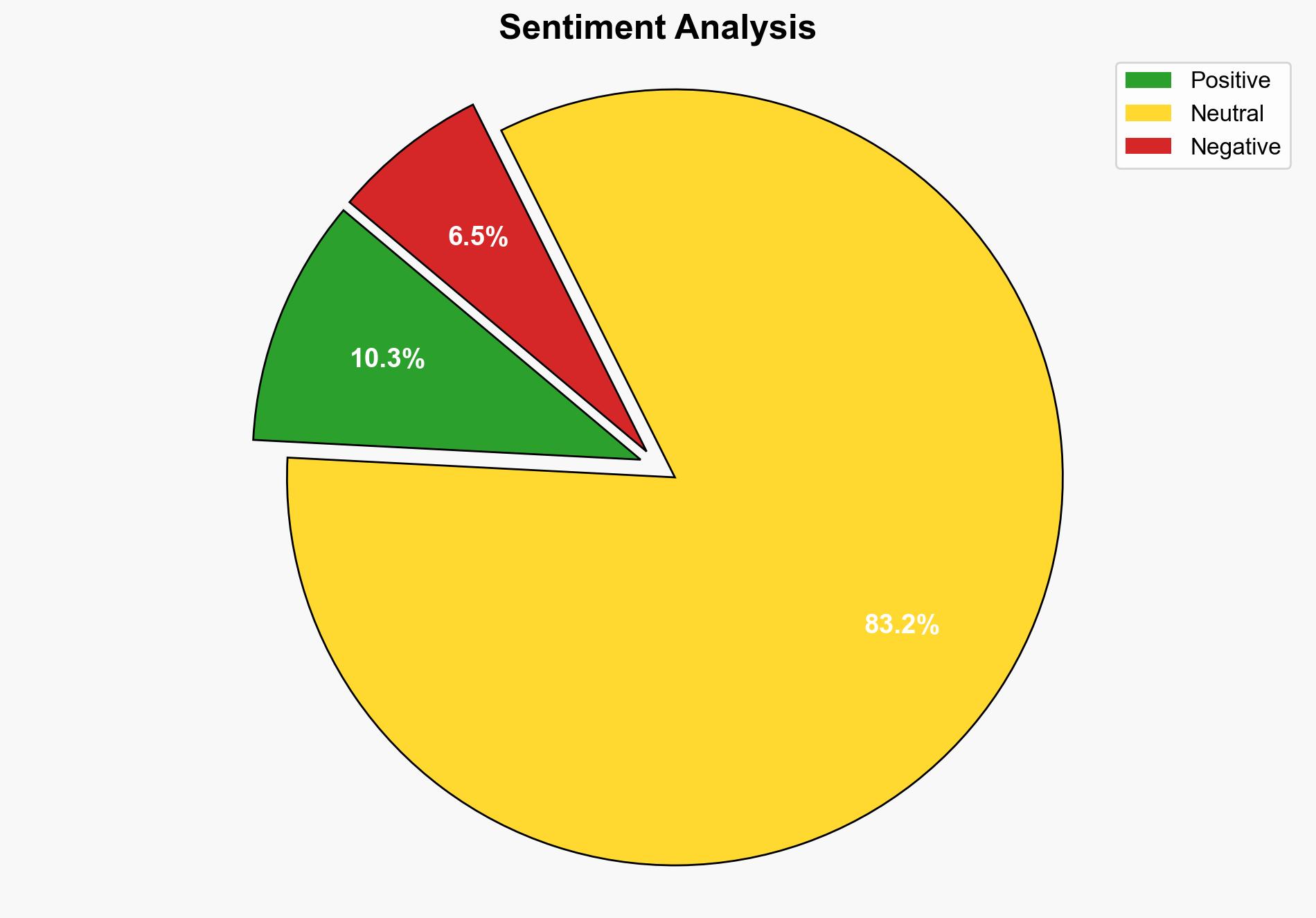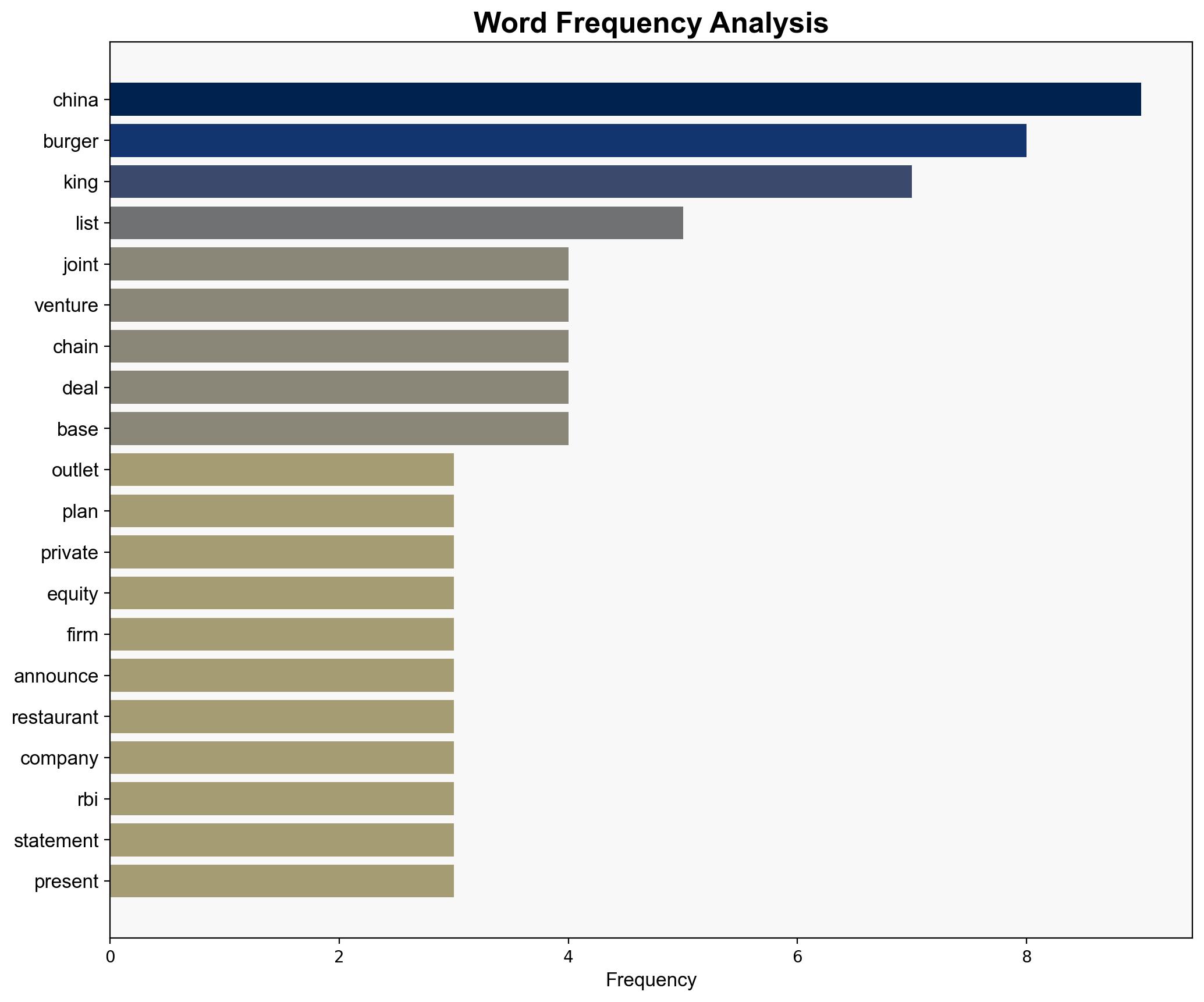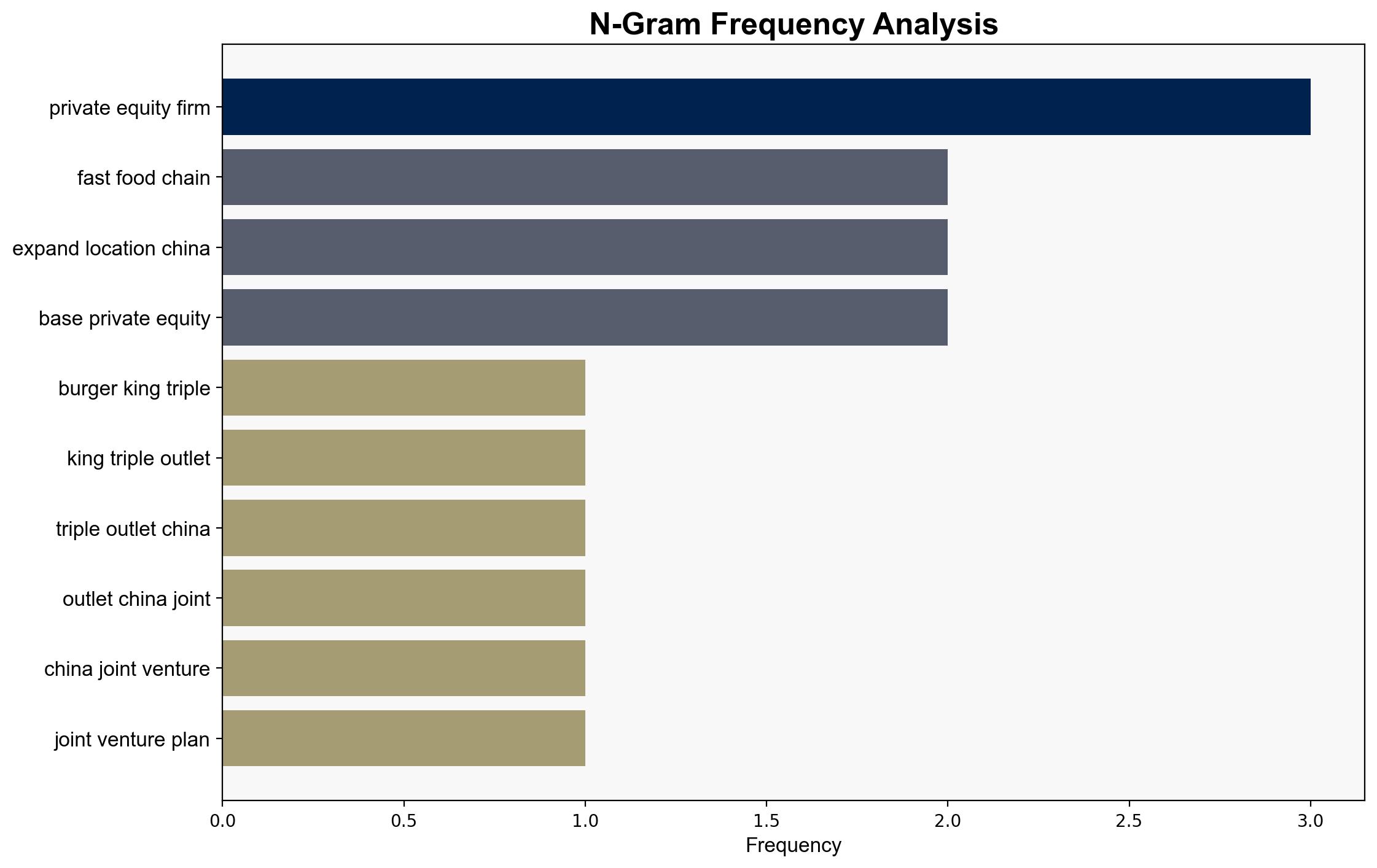Burger King to more than triple outlets in China under joint venture plan – Al Jazeera English
Published on: 2025-11-11
AI-powered OSINT brief from verified open sources. Automated NLP signal extraction with human verification. See our Methodology and Why WorldWideWatchers.
Intelligence Report: Burger King to more than triple outlets in China under joint venture plan – Al Jazeera English
1. BLUF (Bottom Line Up Front)
The most supported hypothesis is that Burger King’s expansion in China through a joint venture with a local private equity firm is a strategic move to capture market share in a rapidly growing fast-food market, leveraging local expertise and capital. This move is assessed with a moderate confidence level due to uncertainties in market dynamics and competitive pressures. Recommended action includes continuous monitoring of market entry strategies and competitive responses.
2. Competing Hypotheses
Hypothesis 1: Burger King’s expansion is primarily driven by the strategic goal to capture a larger share of the Chinese fast-food market, leveraging local partnerships to overcome previous market entry challenges.
Hypothesis 2: The expansion is a defensive maneuver to counteract declining market share in other regions by diversifying into the Chinese market, despite potential risks and uncertainties.
Hypothesis 1 is more likely due to the structured joint venture with a local partner, which suggests a proactive strategy to integrate into the local market, rather than a purely defensive reaction to global market pressures.
3. Key Assumptions and Red Flags
Assumptions: The Chinese market will continue to grow and remain open to foreign fast-food chains. Local partnerships will effectively mitigate cultural and regulatory challenges.
Red Flags: Potential regulatory changes in China affecting foreign businesses, increased competition from local fast-food chains, and geopolitical tensions that could impact foreign investments.
4. Implications and Strategic Risks
The expansion could lead to increased competition in the Chinese fast-food sector, potentially driving down prices and profit margins. There is a risk of over-reliance on the Chinese market, which could be problematic if geopolitical tensions escalate. Additionally, failure to adapt to local tastes and preferences could result in underperformance.
5. Recommendations and Outlook
- Monitor regulatory changes in China and adjust strategies accordingly.
- Invest in market research to understand local consumer preferences and tailor offerings.
- Best-case scenario: Successful market penetration with significant market share gain.
- Worst-case scenario: Regulatory hurdles and competitive pressures lead to financial losses.
- Most-likely scenario: Gradual market share increase with moderate success in adapting to local market conditions.
6. Key Individuals and Entities
Joshua Kobza, CEO of Restaurant Brands International (RBI).
Private Equity Firm: CPE (Beijing-based).
7. Thematic Tags
Regional Focus: China
Structured Analytic Techniques Applied
- Causal Layered Analysis (CLA): Analyze events across surface happenings, systems, worldviews, and myths.
- Cross-Impact Simulation: Model ripple effects across neighboring states, conflicts, or economic dependencies.
- Scenario Generation: Explore divergent futures under varying assumptions to identify plausible paths.
Explore more:
Regional Focus Briefs ·
Daily Summary ·
Methodology





